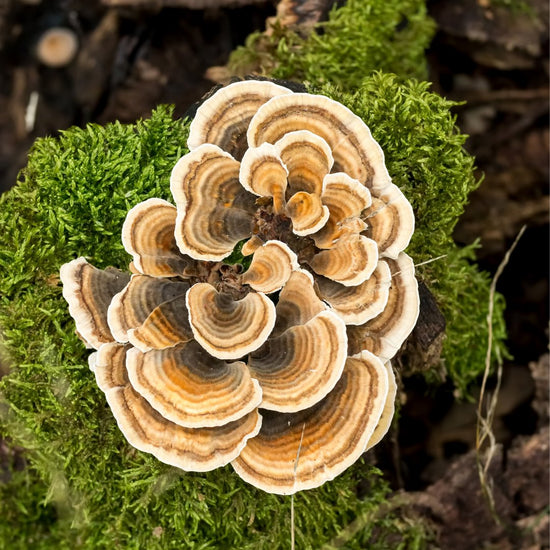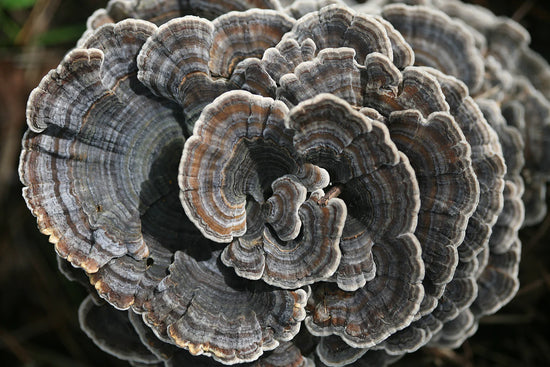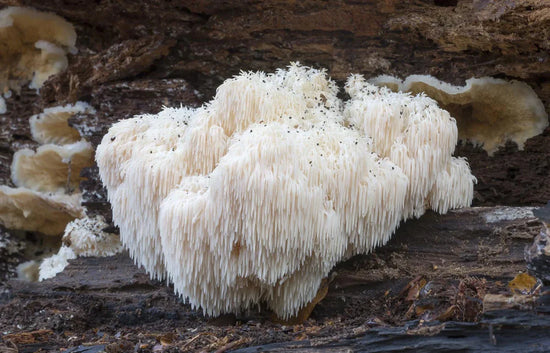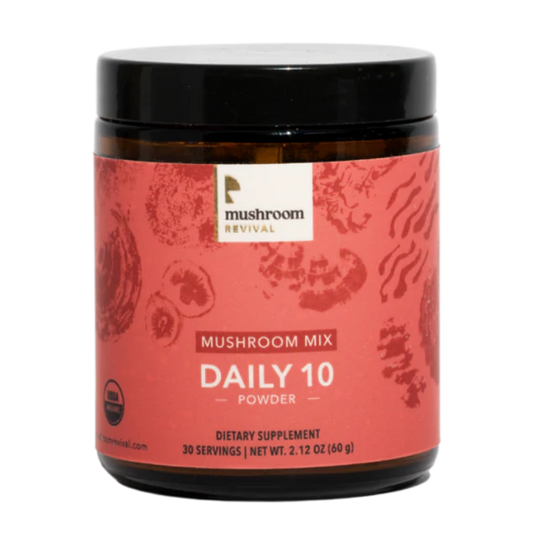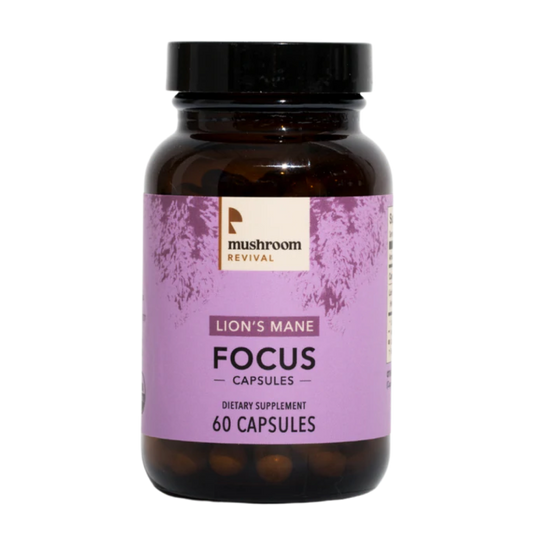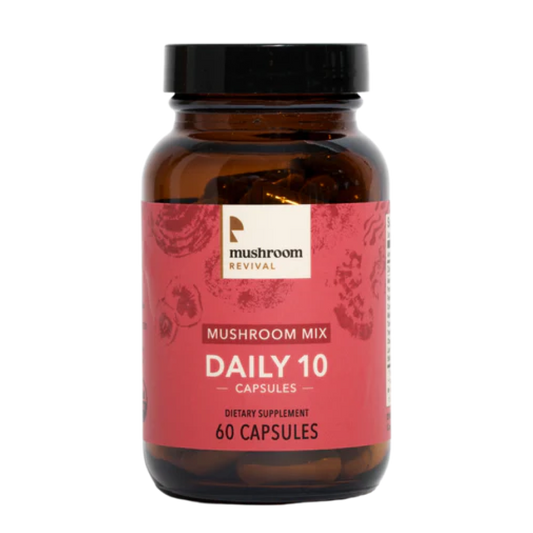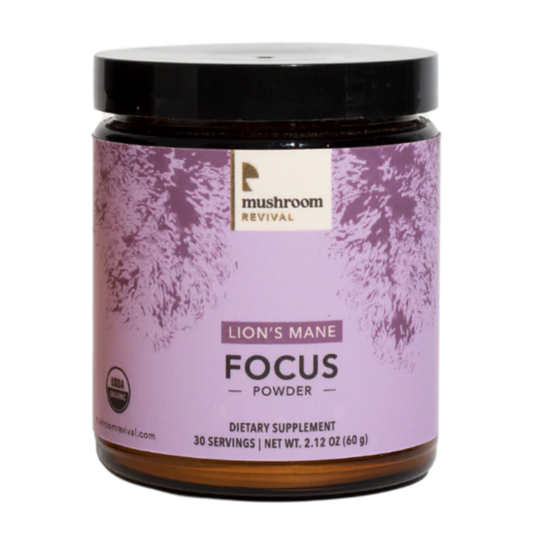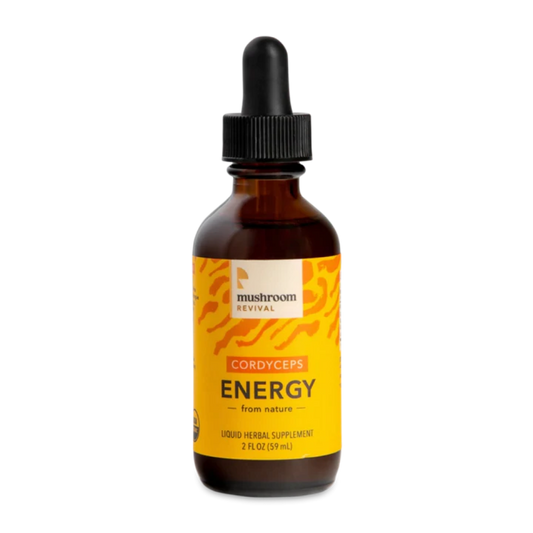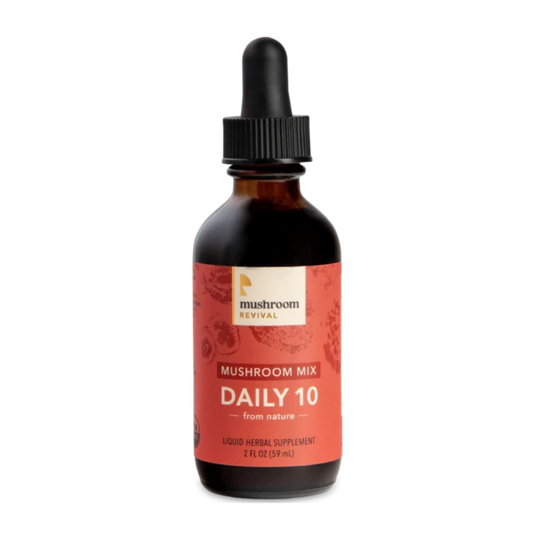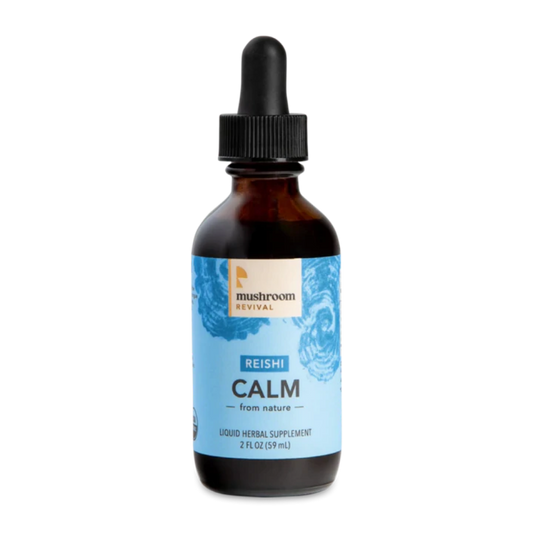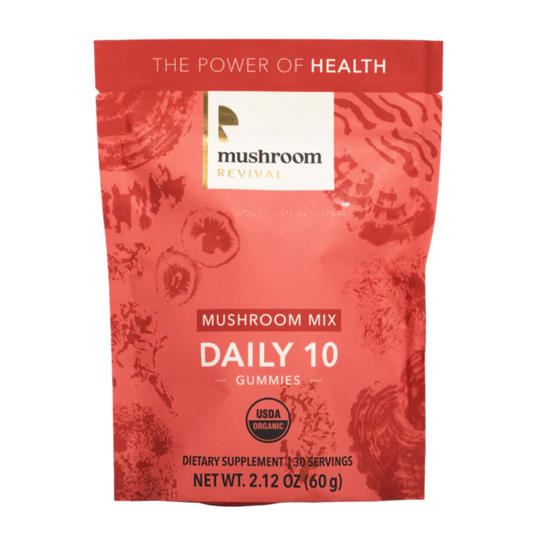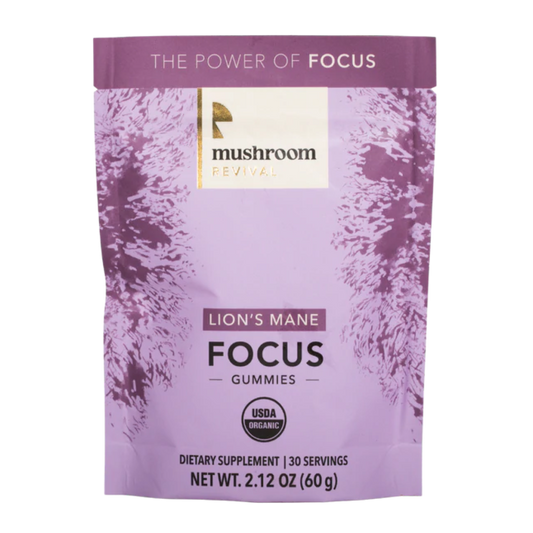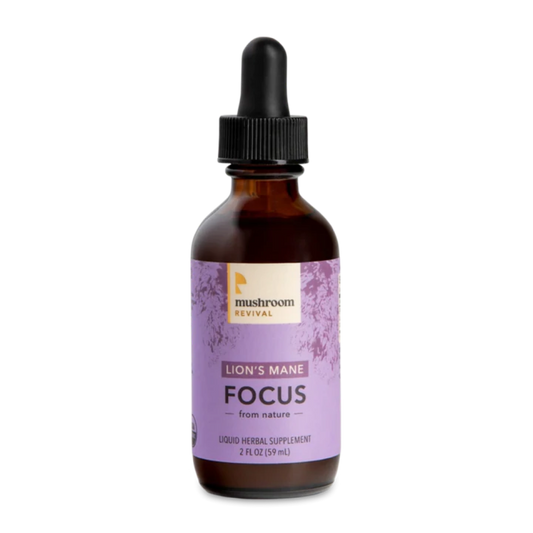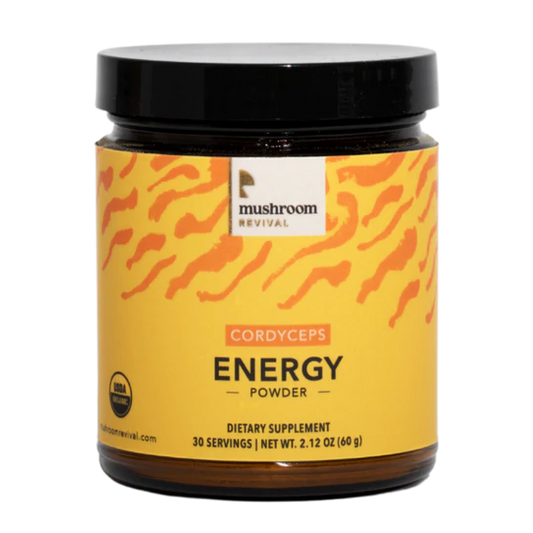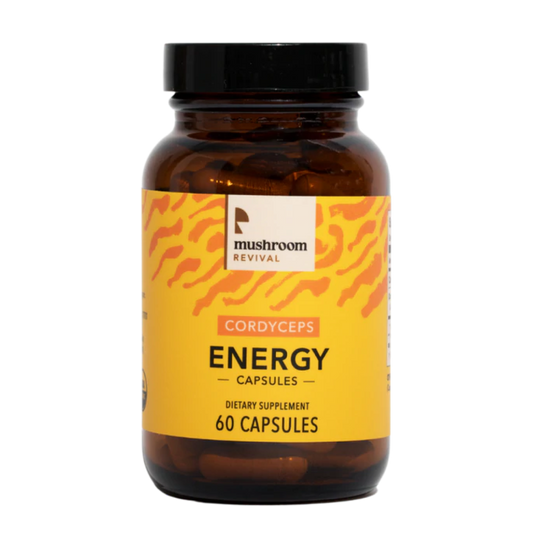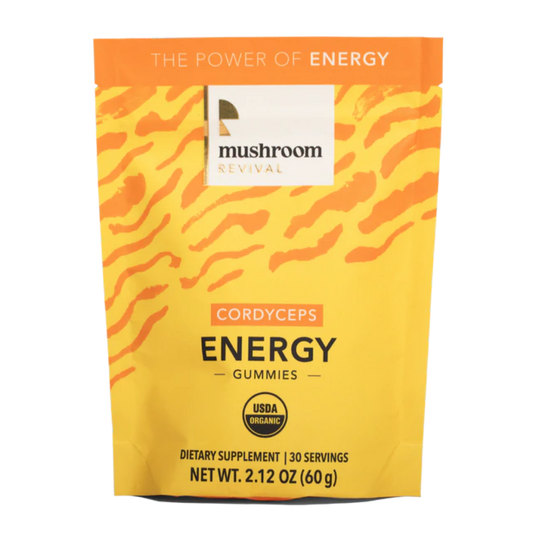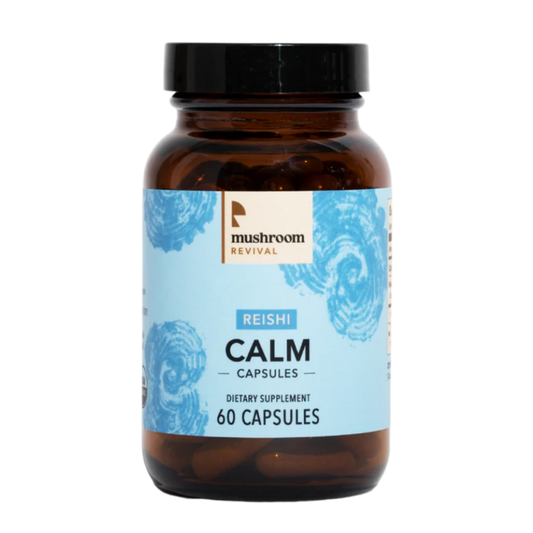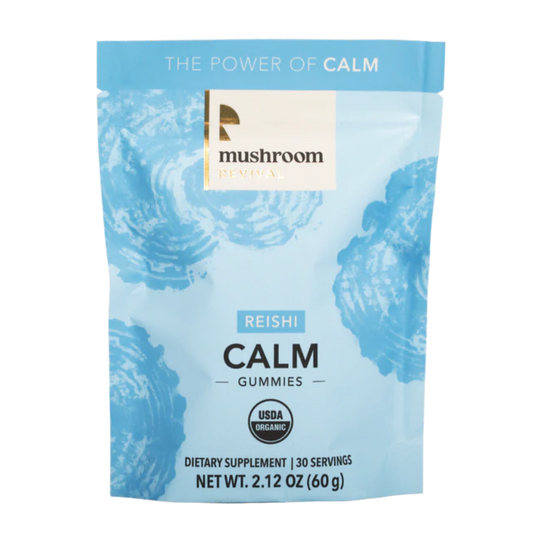Wind Turbines Made from Mycelium with Valeria La Saponara
Alisa Nappa
">
.js?container_id=buzzsprout-player-&player=small"
type="text/javascript"
charset="utf-8">
 In an age with an alarming increasing demand for energy consumption, we need more sustainable solutions if we're going to continue as a human race. Today we sit down with Valeria La Saponara, an Italian-American mechanical and aerospace engineer, who is developing biodegradable wind turbine blades made from mycelium composites. This episode will figuratively and literally blow you away.
In an age with an alarming increasing demand for energy consumption, we need more sustainable solutions if we're going to continue as a human race. Today we sit down with Valeria La Saponara, an Italian-American mechanical and aerospace engineer, who is developing biodegradable wind turbine blades made from mycelium composites. This episode will figuratively and literally blow you away.
Sign up for our podcast giveaway here. Our next winner will be selected on December 27, 2023 and contacted via email.
TRANSCRIPT
Alex 0:11 Welcome, welcome to the mushroom revival podcast. This is your host Alex Dore and we are absolutely obsessed with the wonderful, wacky, mysterious world of fungi and mushrooms. We bring on guests and experts from all around the globe to geek out with us and go down this mysterious rabbit hole and try to figure out what the heck is going on with these fungal mushroom beings that we are so interested in. And if you want to support the show, head over to mushroom revival.com. We have a bunch of organic functional mushroom products from gummies capsules, powders, tinctures. And we have a bunch of free ebooks, including my newest book, The Little Book of mushrooms, you can check out to go down further into that mushroom rabbit hole. But today we have Valeria joining us from California to talk about a lot of things. You're you're up to so many different projects. So Valeria. How you doing? And do you want to introduce yourself to the lovely mushroom revival podcast family. Speaker 1 1:10 I, thank you so much for having me. And thank you to all the people that are listening at us. I'm very excited about being here. And yes, I am in that rabbit hole. Because there is so much more to learn. So I am a professor at the University of California Davis. I am I was born in Italy and I moved to United States for graduate school and pretty much never left. moved further from the east to the west coast. So made my way from Georgia to Utah to California. And I've been at UC Davis for a number of years since 2005. And all this mushroom obsession of mine actually started in 2009 teen so I am a recent convert. Alex 2:02 And where did you grow up in Italy? Speaker 1 2:04 I grew up in Naples, which is NC and I don't remember many mushrooms outside once in the market. But yeah, actually, my mom had the country house in the chain of mountains in the middle of it are called the upper Nene. And she has very fond memories of foraging for mushrooms. She says she could she knew all of them as a child. I know very few because I didn't grow up in that atmosphere and that knowledge and I really miss the fact that there are so many mushrooms that we just don't know about. So when I go around and I see mushrooms, I treat them with suspicion because I can kill you if you get the wrong ones. But they have incredible properties. And so I wish I had learned from her but living in a big city you really don't have that kind of exposure. Yeah, Alex 3:02 yeah. are one of our employees. Elisa Napa is from Reggio Calabria. Yeah. By Sicily in the South. Yeah. And yeah, it's it's great. I there's actually also a medicinal mushroom conference. I feel like it's by Naples, it might be in Naples next next summer. And our I think is maybe in September, I have to look at the details. I just got an email about it. But I definitely want to visit Italy next year to go maybe truffle hunting search for porcine. And it seems like there's such a beautiful mushroom culture there. Speaker 1 3:38 Yeah. So that would be in the north. In the ops area in is where there is this incredible culture of truffles that are very priced dogs and sometimes people steal each other dogs during competition to find the truffles. Same thing with pigs. I mean, there is an incredible culture there that again, many countries have a very old history of culture, mushrooms foraging. And this knowledge unfortunately, is not easily transmitted. And you kind of have to learn on your own. But then again, you you want to make sure you get the right ones. Yeah. Alex 4:16 And so how did you go from mechanical and aerospace engineering into mushrooms in 2019? Okay, Speaker 1 4:24 so I am a structures person. And I've been working with fossil base composite materials. This is the materials that you would find in aircraft wings in space satellites in wind turbine blades, and we'll talk about that later. And so I had my typical training and doing the same things over and over and at some point, I was part of a group of parents. I have a birth son and I have an adopted daughter and my adopted daughter is African American. And so one of the challenges is that You can afford African American girls hair under a bike helmet because there is a texture that just doesn't fit. The one size fits all bike helmets. And so this parent group that I I was meeting with, we did actually we did an outreach event in my lab, which is called the tower of death where we basically dropped this sledgehammer hat on a bike helmet that is on top of a watermelon and, and my friend, Rachel Falk cook asked me, Do you know any bike helmets that can fit girls because again, every time you have to redo the hair, the braids, and this is not just a problem for African American girls, if you have a fear of a ponytail, big had small had bike helmets for children don't really adjust properly. And so that's when we started our company. It's a startup that we started in 2016. And there were two people she taught, she was a business person. She has a Master's of her health policy and, and I am the engineer. So there were two of us startup, working in this Co Op, called Amen topia, Tim Keller here at UC Davis basically set this up. And we're like trying to do as cheap as possible no money whatsoever. And so I was doing a mix and pour, I had this idea that I would basically have a liner that would have a cork in it to reinforce it. And the liner was made with polyurethane. And when I was doing mixing, pouring of the polyurethane off the shelf is the first time everything went fine. And then I kept doing and things seem to be working fine. But after about six months, the formulation basically was not manageable anymore. And they kept forming to the point that you couldn't even control it. And at that point, I had already read enough about polyurethane to know that it's super toxic. It requires two parts. The catalysts, which is the one that accelerates the reaction is using chemicals that a chemical called phosgene, which is world war one chemical warfare weapon, they used to kill the soldiers in the trenches. And we said send these production to third world countries Global South, they're dealing with all the toxicity, we get the product. And I think it's not working, somebody's being intoxicated by this fumes and in a different country. And I feel responsible for them. And there is no quality control and safety in some of these outfits. And so I was thinking, Okay, I'm done. It's not working. So let me look for something different. And so I came across the forms that are made by Ecovative, which is basically a world leader on leader on making firms out on mycelium composites, we the hemp, biomass. And that's when I started playing with it. So I was buying the kit, I was following instructions doing everything in a laundry room. And the instructions basically tell you where you can have, you know, you can just disinfect a little bit your bowl and get some gloves and a spray bottle. And they did not emphasize the importance of sterility, which you Alex's and mycologist know, it's super important. And so I kept trying, okay, I'm trying to put the core kid and I get mold all the time. I mean, just like every time I'm outside my house trying to do this with all the pollen in the air, no idea. Engineer, and so basically could not get anything to work. And so we shut down December 2019. And so I started working with excavating mixers since pretty much the summer of 2019 and really didn't let it go. I was like, I know that he was doing something wrong with it. And again, anybody was mushroom growers mycologist know exactly how important sterility is. And so then we you know, we shut down for COVID and everybody was depressed. I even got hip surgery that didn't help the depression side of things. And I was like, you know, if I had to go to the lab, I would rather do something I'm really passionate about and I really want to go back and figure out what I was doing wrong. And how can I work with these materials that is not producing any toxins is not creating, you know, a large carbon footprint is completely biodegradable. I can put it in my compost bin and be done. And so that's when I started doing trial and error with the the agricultural waste. We have a ton of it in California almond shells on byproducts. I mean, for every amount that you buy, there is three times that waiting waste. And so I started with that. And I was like, Okay, I know it's supposed to work. I don't know why. And then the next people time was when I came across this article by a group from I think it's Dakota State. They found out that you can use an instant pot pressure cooker to sterilize against E. Coli. And since I'm doing everything for basically free out of bargain, I found the pressure cooker in Amazon, the holiday sale 60 bucks. Alex 10:36 Nice. Speaker 1 10:40 Stan, I've been basically using pressure cookers to sterilize because it's a very low cost of energy. And it's everybody can do it. And so and then I kept changing the formulation, I had that nitrogen aspect of things because you basically need carbon and nitrogen and the balance of these two components, it changes with the mushroom. So I started to say, Okay, let me try this. Let me try that. I am from Italy, we have we use so many beans, fava beans, and I had a fava bean meal. And I was like, I know fava beans are full of nitrogen. Let me see what happens if I feed it too much. So the mushroom love the fava beans, but too much. And so it was basically a rush of nitrogen. And the Martian was like, Okay, I'm done growing up for nothing was happening. So you really need the balance. Because if you put too much nitrogen a risk just grows too fast and basically runs out of steam. And so again, the balance and that's okay, I know that the need to acidic environment. Let me try coffee grounds. Here we go. So I make my I make this joke to myself that mushrooms really like Mediterranean diet because they like beans, coffee, you know, I'm Italian. So I'm not a total coffee snob. And then again, that formulation took basically three years to come up with my and so and then we started doing things. So I applied for. I applied for C grant from the use of California's called the Green Initiative funds. And then there was another pivot. I kept reading about bio remediation. And I was like, oh my god, I would love to find out about bio remediation, but basically no zero bio. remediation, because we don't do I mean, I did the humanities rich High School. Very little math, no biology, no sciences, very little of that. And we don't do biology and engineering in Italy. Don't do biology don't do Gen. Ed's, you don't do anything that is not engineering. And so at that point, I get this email from a woman called Vanessa Landis. She changed her last name when she married into Juarez. Vanessa said, Hey, a friend of mine told me I should get in touch with you. I'm a biology. I would like to do an internship or research internship and like, Oh, great. So okay, we can do binary mediation now. And then I was asking around, again, I have there is a professor from UC Davis called gang soon, and is I contacted him say, Hey, you're doing bioremediation. I'd like to work with you. And he said, Ah, I want to retire, please contact these other guys. I'm here to I need 1818. And I said, Okay, I'm here and, you know, you want to try something with mushrooms. And what can we buy, remediate? And Amir said we should try antibiotics because there are so much everywhere, and yet studied the fact that pharmacy food as the same level of antibiotics as wild seafood, because the water is the same. And so at that point, we're like, okay, we're going to try this experiment. And so and then that was the beginning of bioremediation, which is really the thing that I think is the coolest part of my research. But I can tell you about wind turbine blades as well. Yeah, Alex 14:20 well, I read an article that was published in May 2022, talking about how you and your team wanted to run a pilot project at the UC Davis student farm to remove those that antibiotic residue from the farm runoff water. Has that project started yet have you done the pilot project or is that still in the works? Speaker 1 14:41 We applied for funding and the idea was actually that we would grow cover crop like fava beans and then looked at, for example, there is a dairy farm with about 100 milk cows and we would actually work with them to figure it out to remove The recent use of antibiotics from the effluent water from the water from the dairy farm until we apply for funding twice, and we got turned down because they didn't think there was enough data. But we actually have the data of the study with Vanessa Amir and at the shoulder, we tried 20 classes, one, sorry, 20 antibiotics. And for six of them, we were able to pretty much remove a large quantity of them within three days in the lab. And so like, great, somebody's going to listen at us. And we're going to do this. We just got, you know, turned down, try it again, to a different venue. But the idea is still there to basically look at we I contacted the water treatment manager, we have a very large water treatment plant here I contacted the people running animal sciences learn that a drying cow is a cow that is going to be removed from the milk, milking ban and to basically call them loaded with antibiotics. And so the antibiotics are very regulating the milk, you don't drink antibiotics in the milk. But in the meanwhile, the cows get a lot of antibiotics just then when they are treated, they are removed from the milking pool. And again, if anybody's ever had mastitis, as a human, you want the antibiotics because that's what they get all the time. So it was exciting. The idea was there, I ended up actually renting a plot and growing my own cover crop and I got help from my students and my friends to go harvest all these fava beans. But again, they're for the bioremediation and for the other structural projects. It's it's a, it's a shame I didn't get to play with the dairy farm, but you didn't money and they don't give you my daddy. Thank you, I'd like to try. Thank you. And we have the ability to we have a very large agricultural sciences. I mean, it's a massive University for these specialties. So we have the student forum, we have the dairy farm, and everybody was really nice. The everybody on campus was very excited about doing it. But if the USDA doesn't want to give us money, then we can keep trying it. Alex 17:31 It is really interesting. I took a bio remediation course in university and the professor didn't even touch about micro remediation. He only touched about phyto and bacterial remediation. And I was the only one in the class like hey, you know, you're forgetting about fungi. And he was really against it. And he was like, Look, there's not enough funding, no one wants to, no one wants to fund this. And he's like, the amount of funding for phyto using plants to remediate or bacteria to remediate. There's so much money and depending on what country you're in, some countries are more receptive towards bio remediation than others. But, you know, he, he was like, Look, no one's interested in micro mediation. And I was like, I'm gonna prove you wrong. But um, you know, it here in the States, it's just, we're at the beginning stages of of bioremediation is not as popular and but I think, you know, we're seeing a renaissance, where people are starting to get more into mycology, and more into mushrooms and more into bio remediation. And especially since COVID, I've definitely seen a lot more people getting excited about it. So hopefully, in a couple of years or something you can apply again and get that funding because that'd be exciting work. Speaker 1 18:51 So we actually apply for funding for the EPA, part of the state of California to bio remediate contaminated tribal lands. Because we have the situation of a lot of communities, particularly native communities, and in general underrepresented communities of color, the leaving areas that have been conducted contaminated by money mining, logging, wildfires, pesticides, herbicides, and all this stuff is basically still there. It just gets into the waterways. So I'm hoping that the latest round proposals are actually going to be effective. And then I can tell you this story for anybody who wonders about micro remediation. So my in laws are from Rome, Georgia, Rome, Georgia used to have this very large General Electric plant we transformers. And there is this chemical called PCBs that is super toxic, that basically leached into the ground the water and General Electric used to give sludge full of PCBs to its employees and say, hey, put it in your gardens. So they shut down. And they basically, the plant became a Superfund site that has been there for 40 years closed. And I came across recently, more recently, a paper that's that you could buy remediate PCBs, wait mashups. This paper was from 1980s, maybe to a guy called John bumpers. And I wonder, you know, if you're actually micro remediated the site in the past 40 years, instead of leaving it abandon all the people there, my brother in law knows would have not died or cancer, because they actually died in their 40s 50s. So cancer that was caused by all this leachate, and it's just I just cannot believe that it's such a cost effective way of doing it, you just have to put money towards the chemistry to figure out the quantities of the biomass needed, and then basically let it do its what its, its job. So when, you know, we were approached by a number of ways, by particular community that said, you know, our people are dying of cancer, I take it seriously because I see it in my, again, my standard in law's family that this is something that they will generate, I mean, it propagates through generations, because now we're looking for years about these chemicals. And again, I'm just thinking, you know, the word was out there in the 70s for explosives 80s DDT, PCB, I, the paper on Gambia antibiotics, we've been trying to publish it for seven times now, rejected, one of the reviewers said, I had no idea what DDT is. And I'm thinking lucky, you heard the word, because nobody died, or cancer or all this stuff because of DDT. But one of the reviewers said, Oh, why do you want to use precious mushrooms to do the bio remediation of antibiotics? And I was thinking, Well, you know, once you're, you know, antimicrobial resistance is hitting everybody, whether you're rich or poor. And once you're in the rest, you're not in the hospital die, because the antibiotics doesn't work, I want to see if you're going to eat that mushroom into a, maybe that mushroom will save you the fact that you know, I mean, I, I even told this to the when I was doing my pitch, just think about you go to the dentist and you have a tooth infection, the antibiotics doesn't work. And if you have a tooth infection, and you don't treat it, that stuff gets into your your brain. So you know, you can die of a tooth infection because the antibiotics don't work anymore. We use them and misuse them. And the mushrooms would be good Alex 23:10 if it's not only a scientific revolution, but a cultural shift that we need to do connects back to nature because I feel like nature has all the solutions. We're mostly ignoring them all. And I think I think we have most of the solutions, but we just need people to get on board to have funding so we can polish them up and actually use them. Right. And one of the other cool things that you're doing, you know, with so much advancement with type technology, we have more circuit boards and and a lot of the components of circuit boards are really toxic as well. And, you know, part of myco remediation is not only cleaning up toxic waste, but preventing it from even going into the ground in the first place. And replacing those toxic parts from the get go right? And you were working on a project with Katya Vega using making mycelial circuit boards. So can you talk a little bit about what the goal of that project is? Yeah, Speaker 1 24:19 so this was actually a project that we have not continued on. The person who came up with the idea is Master of Fine Arts student who was working with Katya. Her name is El de la Sara. She graduated and is a PhD student at Colorado, USA, Colorado Boulder. So the Master of Fine Arts program in the Department of Design is it's a different level of graduate studies because it's very independent. It's very driven project. And so LD was actually an architect from Peru to begin with. She came in United States and she was recruited By Katya Vega was a professor in design to look at the problem of the waste of circuit boards, they are made with acrylic. Sometimes you do prototypes and you throw them away, and the acrylic will take about 200 years to start breaking down in the soil. And so this was actually LDS idea to come up with a way to make a prototype board with equative materials make it very thin and pliable. And so I started working with them. Within that seed grant opportunity, I had the structural aspect, I had the participation on this prototype board with the LD last row and Kathy Vega and then I had the antibiotics work with Amirtha and eternity and and Vanessa Sivan, this all in the same envelope for $20,000 in a year and a half, we write a super efficient, and so Aldi was able to do all kinds of really nice stuff for for wearables for you know, one of the kind circuit where you basically have like, for example, a tag with LED and then you basically remove the electronics and you just compost prototype board. And when we started working on it, we realized that the mechanical properties of the material were just not comparable to acrylic boards. So they will never fly unless commercially unless there is the interest of a company to say, hey, you know, it's just a one of a kind, you throw it away, it's worth to try to invest in this segment, because there is the interest of sustainability and not, you know, polluting the world with you know, 200 years worth of this materials decomposing. The fatty. So, Aldi has been working on her PhD, and she's doing all kinds of different things as well in sustainability. And not actually I was at I was in an event in Fort Bragg in California, where there was an artist, Tosca Tirana, she's actually California native, but she lives in, in Toronto. And I LD was also invited as a panelist. And it was really nice to see how excited she was about her work. And we had quite a lot of it was a good connection. So I think one of the aspects that maybe people don't realize is that when you start looking into this rabbit hole, you'll become extremely multidisciplinary, because there are so many things to figure out. And if you're doing something innovative with no funding, you'll become very creative about, hey, you know, I will use an Eastern thought instead of an autoclave or a wheel trying to go to my garden and plant some things and I can eat those things and I can use the biomass. So it's, it really opens a lot of horizons in my opinion, which has been the most rewarding part of my project going from kind of aerospace engineer very regimented into Hey, I'm doing biology learning about mycology. And I'm very proud to talk with a real mycology see. What do you know, but Alex 28:26 a real one but but yeah, I'm still a still beginner in all aspects. And another project you were working on and I believe are still currently working on is replacing wind turbine blades which it I've read a lot. It's it's a very interesting issue right now, which it's, it is a sustainable energy practice. However, the blades they only last about 20 years, and then they're just thrown into the landfill. And I read an article that globally, the mass of all blades expected to be thrown in in the landfill by 2050, is as high as around 43 million metric tons, which is a lot of waste in our landfills. And so you're working on a project to combine mycelium and bamboo to make these blades more biodegradable, and potentially recyclable. And another thing I didn't realize which these blades are primarily made out of a rare wood, which DeForest a lot of vulnerable ecosystems and then there's some other materials wrapped around that wood. And so using bamboo is a more and mycelium is a much more sustainable are much more sustainable materials in total. So can you talk about this project, how it's been going, what inspired it, etc? Speaker 1 29:58 Yeah, so All, this was actually a spin off idea of the work with the prototype boards. Because when we were trying to figure it out the properties that were comparable to what you have in the market, I started putting it in, in like in a sandwich construction with plywood. And the mycelium loves anything that's 30 plywood is super dirty formaldehyde glues you name it, but it's not biodegradable. So I was thinking, hey, it'd be nice if we use a glue that is completely biodegradable. And again, I didn't want to use the the typical board that is using wind turbine blades, because comes from vulnerable ecosystems. And I had this thing in my mind that I remember that during COVID, there was the show on Apple TV called home. And there was an absolutely beautiful house in the island of Bali in Indonesia called Shama springs, three storeys made of bamboo. And it's a Canadian architect, and the company is called a buco. And I was thinking, if you can have three stories out of bamboo, and it's architecturally absolutely incredible, then I'm sure they can put bamboo on a wind turbine blade, and they can take that load. And so that was the idea of going from plywood to bamboo. Bamboo is the fastest growing plant in the world. The thing I didn't realize is that bamboo is anti fungal. So it took a lot of work to figure it out, hey, how I'm going to do that bonding, but we figured out kind of a trade secret. But the main thing is that also I was lucky that I had at that point, one of my students decided to intern with me and is engineer from China, who has been working with bamboo for fun for many, many years, because there is this incredible culture in Asian countries working with bamboo. And it could do all kinds of weaving, it was making bamboo chips in bottles. And when I had my idea about bamboo mycelium, I didn't even know what such then he was actually interested in bamboo. So we started the two of us that the putting together these ideas trying to come up with different ways to do it. And the other thing again, there is a lot of future architects that are doing all kinds of projects in Asia, they want to relearn how to design with bamboo. Because I read just for this interview, that bamboo was used for scaffolding for the early sections of the Great Wall of China, that is seven BC seventh century BC. So in Asia, they used it for 2700 years, supposedly, and I think it's an incredible type of material. And we we started working on putting together the wind turbine blade. And we have two prototypes. One is for a small 400 Watt turbine, we did not test that we basically built it as a proof of concept. The other one that we're working with is a one kilowatt, which starts being actually a decent number. And for that one, we need to do a test for the rotational speed. So we're waiting to up to attach it to a dynamometer to do the rotation. And we don't know that it's going to make it to 800 RPM, that looks like a really fine number. But if he survives, so if it does not survive, we redesign. And if it does survive, then this means that we can finish the turbine we need three blades and we're going to build a tower and put it outside this research center on campus where nobody goes there, we will tell the people who go there, hey, this is not the time for you to be but because we are going to test it and the winds in Davis are not very high. So at most we expect 0.6 kilowatts, if all goes fine, but that's to be seen. So I think it's a it's a it's a proof of concept. I would say it's probably 95% biodegradable, we have parts that like for example the adapter to the rotor is 3d printed. You cannot degrade you know you cannot biodegrade that but we're excited that we we have been able to build this and at least have that proof of concept. So we definitely don't want the blades to be contaminated and landfill the the is cost is is not in materials but in labor is still a very labor intensive process. And I think that might be a way to scale down the labor cost. Right now, I'm still using, you know, a lot of free labor into quotes undergrad students supported by College of Engineering. And it's, it's really, we're still pretty excited about it then. So it was very nice to see the videos and the students doing this stuff. And I'm hoping to be able to scale it up to 10 kilowatts, which would be actually a decent amount of power. So we have right now at one kilowatt prototype, we have a blade that has been designed us using aerodynamics, a wind turbine blades, we're working with, actually two professors. Nicolette Barbato is a Professor of Civil and Environmental Engineering is the CO principal investigator on the project, and is postdocs is research, it would be the person who's going to design the tower when we're ready to install the blades. And then can be brought back there she is a professor in Mechanical and Aerospace Engineering. And she's an expert of aerodynamics. So wind turbine blades, and she was the mentor of the student, Fernando and under Sanchez, who did all the aerodynamics. So based on the model by Fernando, he thinks that we can generate 0.6 kilowatts in the best case scenario with the winds that we have in Davis, but we're going to test it on a dynamometer. And the speed of testing will be 800 RPM, which is going to be intense. So we have to make sure this thing doesn't shatter. And we're going to put it in that table or net hoping that everything stays inside and that if ever. So, yeah. When Alex 36:59 is the commercial one kilowatt turbine? Is that how big a normal wind turbine is? Or are they much bigger, Speaker 1 37:08 they're much bigger. So it's a very, the one kilowatt is a very small niche. I've seen pictures of rural schools in Alaska, where they're using a number of 10 kilowatts, so I'm actually looking at the 10 kilowatts market as a much more meaningful in terms of production of energy. And again, this would be a situation of providing energy with materials that do not pollute the earth and are fully biodegradable in rural communities. So even in disaster relief area, so when I'm thinking of places like Puerto Rico, where they had this number of one, one after the other hurricane, you know, if they had access to solar power and wind energy, at the same time, they would have been able to recover much faster. But, you know, that's not where they are. And there are a lot of places with disaster relief issues, especially on the islands with climate change, you really don't know what what's going to hit you and, and that's a sequence of events hurricane after hurricane. So, you know, if, if the materials are not expensive to make, then okay, you lose the blade and you lose the turbine, build another one. That would be one of the things that it's not the cost is in the labor, not in the materials. So I'm hoping that there would be a way to scale up to thank you for what and I have a very modular system where you basically are ready to ship this to whoever needs the surge of power. Alex 38:42 And in the article that I read, you're trying to make sure that these can withstand 85 mile an hour winds is what was what was the baseline for 85 miles an hour. Speaker 1 38:54 So that's the commercial turbine. So the rotor is four blades that will withstand at five miles an hour. It's the standard it's an off the shelf Amazon I love you. Thank you. Turbines bathtub 400 Watts and the one kilowatt are off Amazon and that's the nominal speed at five miles an hour. Cool. Alex 39:24 Awesome. Yeah, I can't wait. I feel like you know, it's this is the same thing with solar panels as well and even batteries, right of, okay, you make all this energy, but then storing it. Lithium ion batteries are really toxic for the environment. And same with solar. You know, when they they're getting better, but when they first came out, you know, it was really debatable if they were actually sustainable, right with all the materials that went into it. Yeah, a lot of it was is very unsustainable and so any way that we can make these sustainable energy solutions better, I think will make a huge impact on the world. And so, you have a background in aerospace engineering, has there been any idea of incorporating mycology into aerospace engineering. Speaker 1 40:18 So the wind turbine blade is the perfect example because it's an aerodynamic structure. And so all the design of doing the aerodynamics, how you design this, the materials experience that they have working with fossil based materials is use is very much used, it's just that you have the additional perk of having a living material. So you have I've been working with very heterogeneous materials to begin with, it's just that this is a level of complexity that is absolutely fascinating. Again, we are all here for a reason mushroom revival people. Thank you, Allah. It's, you know, you can never I to be honest, you can never get bored. If you think about the properties of the medicinal mushrooms, and then you see the Cordy chaps that is taking the you know, don't be fine favorite. Oh my god, I mean, that stuff is just like, You got respect mushrooms, you know, fun. We'll be honest, I mean, we fungi can exterminate us very easily. So we should be respectful and not basically put ourselves in a situation where we are we need to be removed from the ecosystem, because we're doing too much damage. Alex 41:48 Yeah, we'll see how much time we have left. I feel like, once AI develops further, they're just gonna run one algorithm and find out that humans problem for every Speaker 1 42:01 1001 Yeah, I don't know. I think the one of the perks of working with bioremediation ideas is that there are there is a lot of traditional knowledge out there about being stewards of the earth. And to be honest, we really never did that as you know, Western colonizers in varying the world. And I think that is the really the need to realize that we just have to step back and say, Okay, we're doing all this innovation but we're destroying everywhere. So what's the point if you cannot transfer if you cannot give a clean hurts to your, you know, descendants? What's the point of accumulating all these wealth and all the greed of the world then you know, we can go there Alex 42:56 Yeah, totally. Speaker 1 42:57 I mean, to be honest, I you know, I so I have my own garden plot and just in two growing seasons, fava beans, I saw huge differences. I mean, we had perfect weather Alex 43:13 like fava beans Speaker 1 43:22 Yeah, I'm making soybeans and bacon tonight because we use actually with very fatty meats. So I do eat poor I'm not vegetarian, I have cut down on the meat consumption. But so the thing I noticed is in the season of 2021, growing season planting in 2021 Everything went fine. I had a very large crop harvest but last year it was very rainy all the the RVC was delayed to the point that the bugs came in because your past and so I have very poor harvest in my garden, but then the garden or the university that did not have any plants around I was able to harvest very well. So just two growing seasons, anybody who has any form of vegetable, you know, green thumb, etc can see these very noticeable changes from ear to ear. And it's only going to get worse. So I think we need to bend up and I to be honest, let me do the pitch. We people from the global north have to clean up everywhere else because we global northerners are responsible for all of this. But nobody's actually I think the global Saudis to find a way to have so much power they will say okay, you come and clean you want the electric car then you clean up all the toxic waste in the Democratic Republic of Congo with all the cobalt mines. I mean, we can go there. Alex 44:50 Yeah, use mushrooms. Yeah, it is complicated. And I've heard various solutions from you know, carbon credits to Who this idea of I can't remember who the researcher was, who originally proposed this, but incorporating the cost of cleanup and incorporating the cost of potential hazards to human health, you know, for, for curing the cancer caused by certain materials and things like that into the original cost of the product, where now a lot of these companies, you know, like, a good case is, is Chevron Texaco and Ecuador. You know, there's 1000s of unlined pits of oil that are still there, and they lost the lawsuit, and they owe, you know, I think it's billions of dollars, and they just refuse to pay. And there's no accountability, right? And so Holding, holding companies accountable for the entire process of the product, from what is it, it's like shelf to cradle or something like that, I can't remember the phrase. But yeah, the whole lifecycle of that product, like if you bring a product into the, into the world, like everyone should be held accountable for the full process. And if it's more toxic, than you should pay more right, to cover that remediation cost, or to cover the cost of any health, negative health effects it has on other people. And as of right now, there's no accountability. And I would like to see that change. And I think that's a solution. Because money rules the world. And if you if you make it cost more money, then then yeah, not a lot of people are gonna buy it, and not many people are going to produce it. And so we're, it's kind of forcing people to be sustainable, right? Feeding two birds with one stone. So Speaker 1 46:52 I fully agree with you, Alex. And the other thing I wanted to mention is I didn't close the loop on the wind turbine blades. So the European Union put so many constraints about wind turbine blade, say you cannot learn feel them that a company came out with a chemical process to degrade them chemically. And so you have regulation and incentives, people will come up with innovation, if you just let them run, then nobody is going to be especially large corporations or multinationals. I mean, there is cost they were really you know, we like having, oh, we have the electric car I am so I'm so great and sustainable. But then you start reading all the mining that goes into my insane the nomadic Republic of Congo, the pollution, the I mean, it's horrible the stuff that we're doing to them when the cobalt mines, and that's, that's responsibility of Europe and other countries as well. But it's just, I don't think anybody's clean. Ethically clean is not possible. Even if I'm using wind energy, I'm using electric car, it's just, it's the reality. And I think it's, we should basically really take the we should pay for all the cost of the health outcomes for these people. And again, when if you're in a situation of poverty, you're not going to be say, I cannot go in an open pit and mining of cobalt, you're going to do it to you know, feed your family, but I don't think we we should do we should we cannot pollute the rest of the world. We have done it for generations. So Alex 48:43 I usually asked guests that I bring on the show, like what keeps them up at night. And I have a feeling this is it first year. All right does for me. So I'm, Speaker 1 48:56 I have two kids, and I worry about what waters they're going to have the vegetables, you know, the food, the food supply, we have a secret. Well, we have a situation of war. One of the projects I'm working on is to prepare a proposal for basically removing explosives in areas that have been heavily, you know, minefield. And the fact that you know that, again, there were studies that showed you can remediate with fungi, implants, explosives, DMT, and that kind of stuff, and nothing has made it to the mainstream. I mean, nature solutions are there and I think people should just open up their minds. I mean, I have people say how you asked me the same thing. How does an aerospace engineer start working on biology? Wow, it's super interesting to be honest. And second, there is so much potential for interdisciplinary work and just opens your mind when Start thinking about all of this stuff. Alex 50:01 So on the flip side, what has been the most rewarding aspect of your work? What what gets you super excited? What gets you motivated? What keeps you inspired? Despite all the global trap travesty that humans keep perpetuating? Speaker 1 50:18 Be honest, I think bioremediation is the way of the future because it's too expensive not to buy remediate. Yeah. And so I think it will be, I think, when people start paying attention, and again, the mushrooms and fungi are fashionable right now. But people are reading papers and reading stuff, I think it's going to just innovate so much, because again, we have, we have to come up with a cheap solution that are sustainable to clean all the damage that we have done in basically during industrialization and colonization. And if we don't, we're all going to die. Because the fact that I, you know, I eat fish that has that has basically been in the same water. So I have another place full of antibody. I mean, we're all connected by water. So antibiotics, you know, resistance is going to kill ourselves. Or, you know, the fact that some of these plumes are coming from polluted places. I mean, we're all in this together. So I think I actually against the space race, because we should not send people to Mars, we have the the fix Earth. And you see any documentary of nature, especially, you know, anything, any scuba divers, the coral reef, or whichever continent you're looking at, it's just absolutely beautiful. There is nothing else in the rest of the universe that's worth the view of that. And to keep it safe, we really need to bend up together and just stop screwing around with wars and greed and just basically clean up. Preach. Yes, Alex 52:12 I agree. I agree. Yeah, we're we're pretty silly sometimes. But you know it. Yeah. I feel like I always joke about this, but I feel like the aliens are just up in their spaceship watching. Like we're a reality TV. We're a trashy reality TV show for them. And they're, like, eating their space popcorn. Like, they'll never learn like Speaker 1 52:35 they're heading for you know, species destruction. Yeah. Because then Alex 52:41 mushrooms will take over again and, and global biology we'll we'll make a new species that will be the next dinosaurs will come out. Speaker 1 52:53 So it's my fungi. I have to look at the number because it looks like so incredible. 2.4 billions of years. That's when our the the fungi are. So they're going to survive us all. Alex 53:08 Yeah, they've been around the block a few times. You Speaker 1 53:12 guys humans your best keypads fast. And you're just you know, I'm just going to give you Yeah, the if you read stuff about pathogens, fungal pathogens is pretty scary. You know? Yeah, they case. Again, cool. Stuff like we lose a theme 20 30% of the rice harvest every year to Rice, our rice are pathogens. So we need to take this stuff seriously. And again, be multidisciplinary is a very good idea. Because I come up with ideas. There are people who have been working mycology maybe demon thinker because I'm looking at other perspective. Yeah. Alex 53:55 And I am, I am really glad that so many engineers are coming into the, the mycelial construction space is because you know, so many peer mycologists Just have a very narrow minded view on how to solve these problems. And, you know, it really takes an engineer to have that perspective shift. And then, you know, I think engineers and mycologist can solve a lot of solutions and mycologist can solve the sterility problem and then engineers can do all the rest. But, you know, I'm curious because you have your hands in so many pies, and you know, you're doing so many amazing projects. If you had hypothetically unlimited funds, unlimited team resources, equipment, what would you do? Would you keep doing all that? Every single project would you focus on one? What would you just keep getting exactly what you're doing? Speaker 1 54:59 And repurpose turned on my efforts in bioremediation. In fact, this is once I retire, this is what I want to do full time. Incredible. I want to actually work for United Nations nonprofit we need to go. So my idea is that every country with agriculture, waste of some form as probably a pollution problem, and maybe there is a way to design a recipe based on fungi, for bioremediation using the local crops or every single country looking at the pollutants in that country at very low cost. Because the process is, again, is very affordable. And I think it's just there is, again, there's all this creativity out there. This could be something like money generator for, you know, we could have actually cover crops that are cash crops. For some of these communities. They could be studying science and engineering and become intrapreneurs. And basically, you know, work with a number of local nonprofits. We're not doing Sorry, no white savior stuff going on here. But in any case, no, but it has to come from an organization like United Nations or the Bill and Melinda Gates Foundation, you know, people would basically support money resources. And yeah, I would I like thinking about, you know, I am Italian Columbo, Christopher Columbus created all kinds of problems. I like to clean out my car. You No, I'm not saying that. I estimated a bunch of people, but that I, you know, I'm building my karma points. Karma cookies for my descendants. That will be Yeah, Alex 56:45 I think you're the first person I've heard actually uses his real name. I don't know where Christopher Columbus came from. But yeah, Speaker 1 56:53 not but it's Cristoforo. Colombo. And no matter what you say he's from Genoa. Italia. Yeah, exactly, Alex 57:00 exactly. Okay, there's a bunch of false stories about that guy anyway. So I don't know. It's like Santa Claus. Everyone started making up, change his name change what he did, you know, Speaker 1 57:13 I can see the Italian American immigrants, the Italian for second generations, I can see how they embrace them because he was a symbol of being American. So I can totally see why they would be happy and proud. But when you start reading history, you're like, definitely. But hey, you know, I cannot believe that we're still calling Native Americans. We call them Indians. Some like Alex 57:39 no, yeah. When they never even stepped foot on mainland, now United States or North America at all. He never stepped foot. Yeah, there's a lot of interesting stories, but in terms, you know, in spirit of inspiration, and picking a new person to be inspired about AI, there's so many people on this show that are wanting to get into mycology or engineering or science. And, you know, we have a lot of girls, or women scientists that are listening and they want to pursue science and in a more professional way and to support themselves. So what advice would you give to girl or women scientists out there or just, you know, people in general that that want to pursue the projects that you're going down? What What advice would you give them? Speaker 1 58:30 I think that is strength in numbers. And having somebody to, to team up with the test the same beliefs is going to make you stronger when you started hitting a lot of walls. So I was lucky that I had when I was doing my crazy stuff. About the helmets. I had a friend Rachel that I could talk with. I had people that had different disciplines, and they really, they really believe this is possible. So you're going to have so many answers, I'm still really ticked off that we cannot get the antibiotics paper accepted. But to be honest, it's funny. I have people who cite my papers, like this paper, upset that for publication, but it's out there. It's open source Bio Archive. So I think it's so much easier to put up with disappointments and rejection when you are with people who believe in you friends, classmates, professors, whatever it is, that gives you strength. There is no reason to do this alone. Alex 59:40 It's all about community. There. Speaker 1 59:41 There are a lot of people out there that are I would say to women and underrepresented minorities in science and engineering. There are a lot of people out there that are rooting for you. There are also a bunch of sorry bullshitters and people that hate you For doing this, just you know, I was bullied in high school and my husband told me the best revenge is success is actually Island. Quote, The best revenge is success. Show them wrong be successful. Alex 1:00:17 Exactly, yeah. No, I mean, we were just talking before this interview about someone who should not be named. And we're not going to say any names in this episode. But yeah, I mean, it's still happens today. But it's incredible to see your strength and perseverance to push through people that want to tear you down and, and doing just incredible work in this world, you know, the oppressive systems want to keep in power, and the they will do a lot to stay that way. But it's up to us to forge a better, a better future that that we see that works symbiotically with all beings, and all all biology on planet Earth. So thank you for your for your work. And I'm excited to hear about all your future endeavors and bio and micro remediation. And where where can people follow your work? Where can people see that that antibiotic paper? Where can people get involved if they want to. Speaker 1 1:01:15 So I keep a keep up with some of the on my website, or UC Davis, I generally post there any articles. So I'm going to post this. And then I have started the putting papers on Bio Archive, because that it becomes open to everybody. Whether the peer reviewers are hostile or not. And in terms of contacting me, I'm getting I'm actually getting contacted, which is awesome. I have been contacted by people that I didn't respect. They just emailed me and say, Hey, what about this? And it's exciting. I mean, I had two high school students working in my lab this summer, Bhavya, and Leica and they're all excited about fungi by remediation with turbin studied CAD drawings of the turbine, you know, it's all excited. So I really appreciate your time, Alex for reaching out to me and all of you on mushroom revivals or you fungi nerds. Alex 1:02:25 Yeah, we're a big family and it's growing which is so exciting. And and yeah, thank Thank you. I'm sure you inspired so many people who are listening to this episode all around the world, we have so many different listeners who tuned in from all over from all different backgrounds from just beginning to knowing nothing about mushrooms to having their PhD and huge companies. It's we really have a diverse listener base. And it is really exciting to do this. So thank you for coming on the show. And thank you for all our listeners for tuning in and tuning in to another episode of the mushroom revival podcast. If you like the show, and you want to contribute, leaving a review goes a long way. And just voting, you know this this podcast and allowing us to continue bringing on experts and spreading the mycelial message across the world and other ways you can support we don't have a Patreon or anything but we do have a website mushroom revival.com We have a whole line of certified organic functional mushroom goodies from gummies. To capsules to powders to tinctures you can check that out. We have a VIP coupon code just for listeners. And that code is pod treat for a surprise coupon code. And if you want to win some goodies without paying any money, we have a giveaway going on. The link is in the description where you can enter to to have a chance to win. We have a we pick one new winner a month and so you can win some free goodies. We also have a bunch of free resources on our website from free blog posts to ebooks to my newest book, The Little Book of mushrooms that is out now, on our website. It's in a bunch of bookstores, Barnes and Noble and a bunch of other bookstores around the country and in the US and apart from that, as always much love and may the spores be with you Transcribed by https://otter.ai







